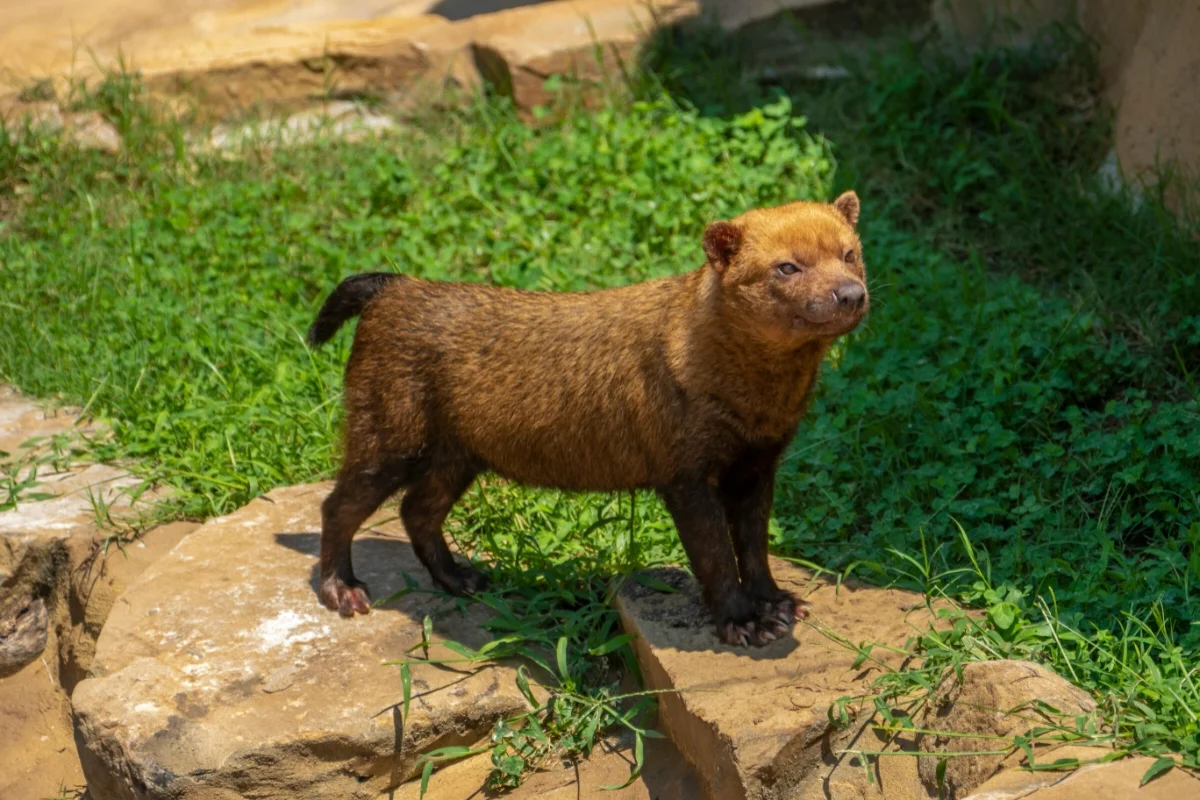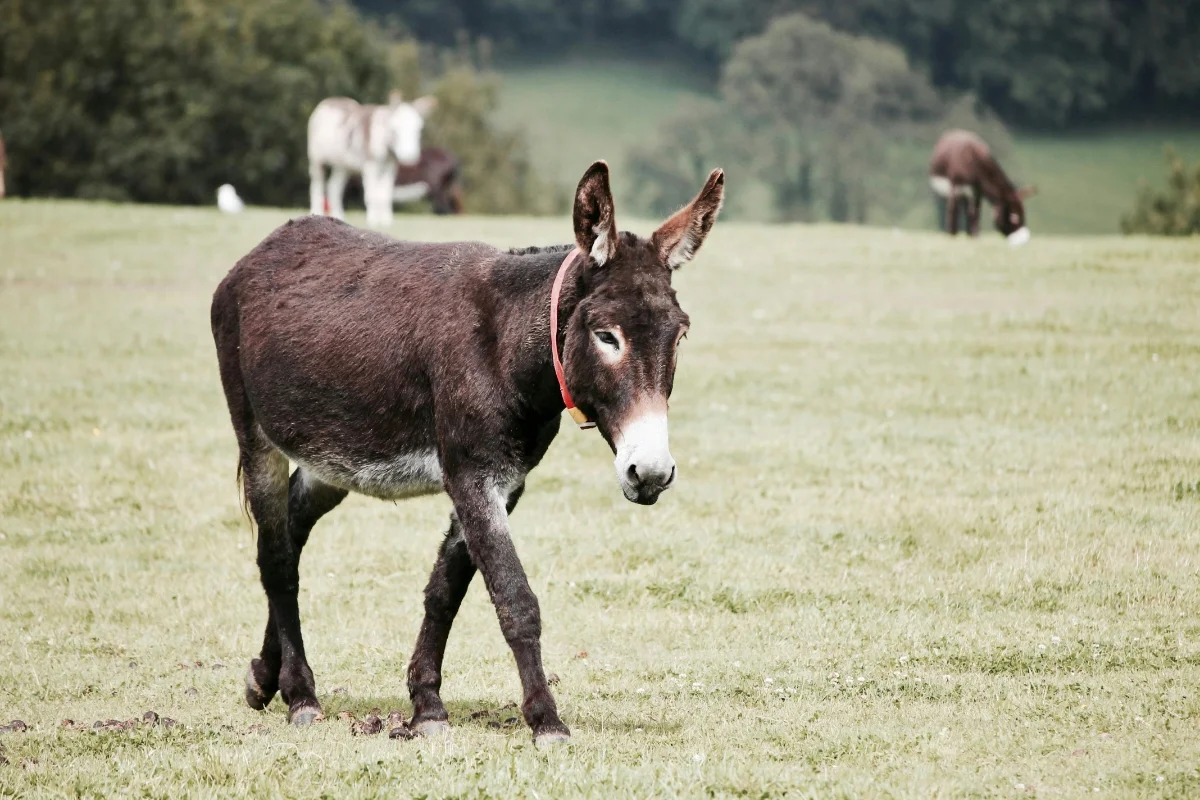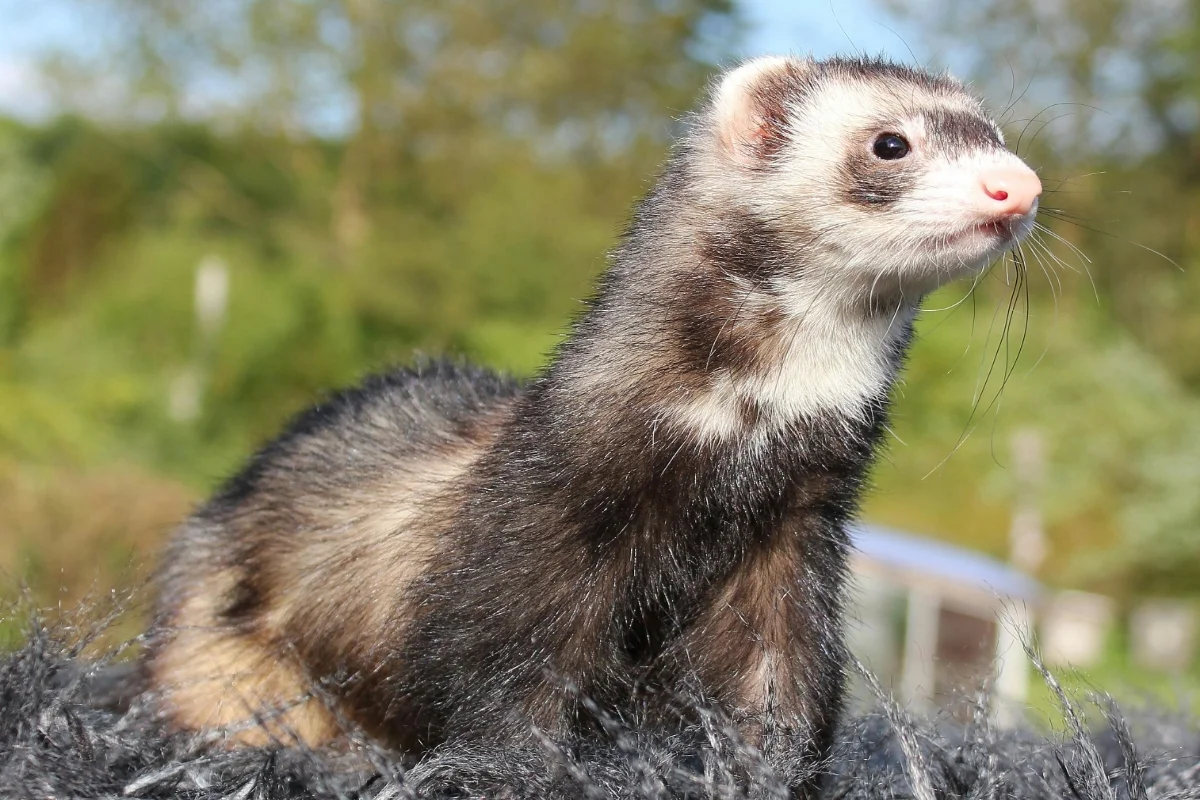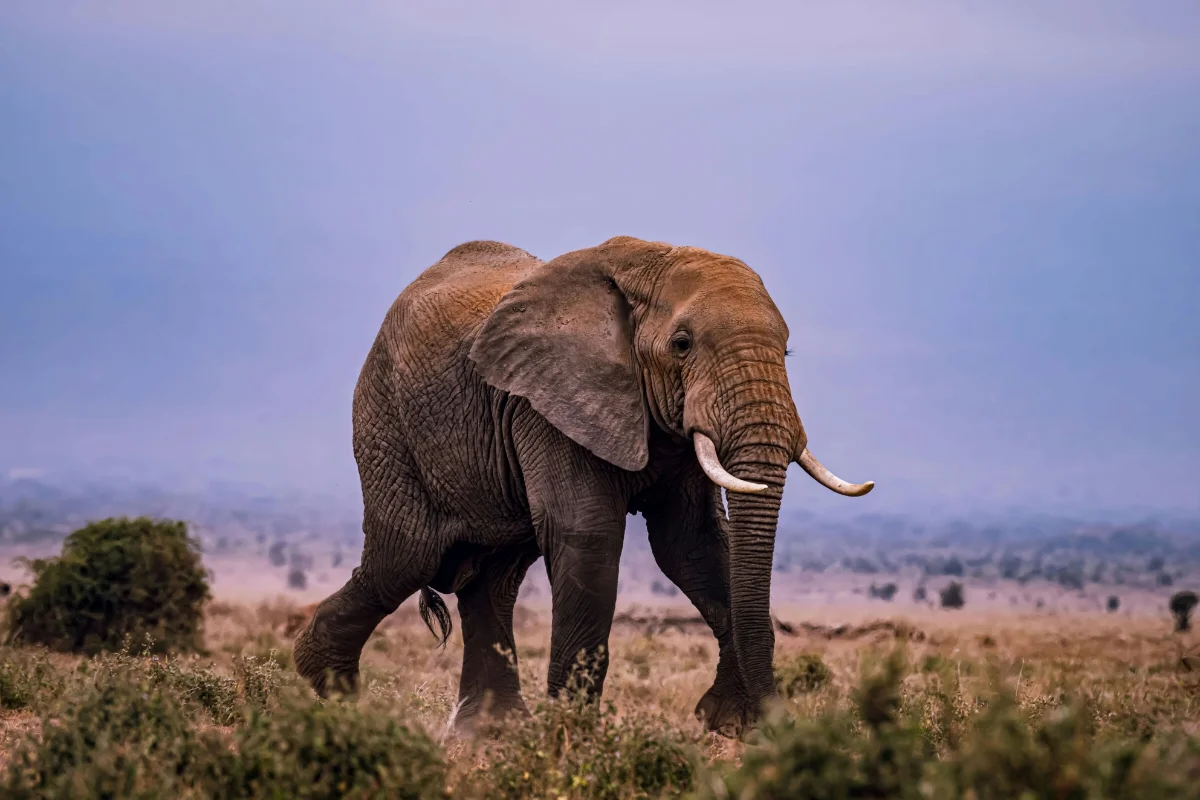
Bush Dog
Bush Dog is a small, social carnivore from Central and South America known for pack hunting. This article provides info about Bush Dog.
By
Published:
The bush dog is a small, rare, and social wild canid native to Central and South America. Known for its short legs, dense fur, and webbed feet, it’s an excellent swimmer and hunter. Bush dogs live in packs and thrive in forests, showing remarkable teamwork and adaptability.
Family: Canidae
Class: Mammalia
Genus: Speothos
Conservation status: Near Threatened
Mass: 5–8 kg (11–18 lbs)
Scientific name: Speothos venaticus
Trophic level: Carnivore
Bush Dog Facts Overview
| Height | 20–30 cm |
| Length | 55–75 cm |
| Weight | 5–8 kg |
| Speed | 22 km/h |
| Food | Small animals, rodents |
| Color | Reddish-brown |
| Location | Central & South America |
| Predators | Jaguars, pumas, snakes |
| Lifespan | 10–12 years |
| Habitat | Forests, wetlands, grasslands |
| Gestation | 65 days |
Characteristics
The bush dog is a small, sturdy wild canid with short legs, a stocky body, and webbed feet suited for swimming. Its dense reddish-brown fur, sharp teeth, and strong sense of smell make it an effective pack hunter in dense forests.
Lifespan
In the wild, bush dogs typically live up to 10 years, while those in captivity can reach around 12 years. Their lifespan depends on food availability, habitat conditions, and the presence of predators or diseases affecting wild populations.
Predators
Bush dogs have few natural predators due to their pack behavior, but jaguars, pumas, and large snakes may occasionally attack them. Habitat loss and human activities, such as hunting and deforestation, are now their greatest threats.
Habitat
Bush dogs live in tropical rainforests, grasslands, and wetlands across Central and South America. They prefer areas near rivers and streams, using their swimming skills to hunt aquatic prey and travel easily through dense vegetation and marshy regions.
Diet
Bush dogs are carnivorous, feeding mainly on small to medium-sized animals such as rodents, agoutis, and armadillos. They also hunt larger prey like capybaras in coordinated packs, using teamwork and endurance to chase and capture their food efficiently.
Behavior
Bush dogs are highly social animals that live and hunt in packs. They communicate through whistles, growls, and body signals. Cooperative hunting, pup care, and shared territory defense make them one of the most organized wild canid species.
Reproduction
Female bush dogs give birth to 3–6 pups after a gestation period of about 65 days. Both parents and other pack members help raise the young, providing food and protection until the pups are strong enough to join hunts.
Science Writer & Wildlife Expert.
Get to know more about the Bush Dog
Read More: 10 Fascinating Animal Adaptations That Will Amaze You



